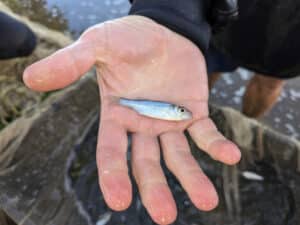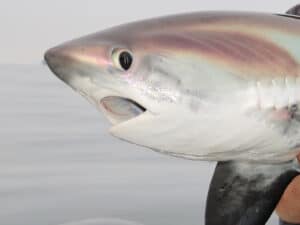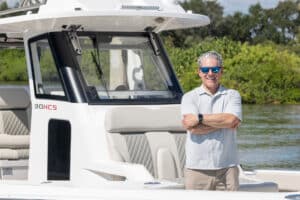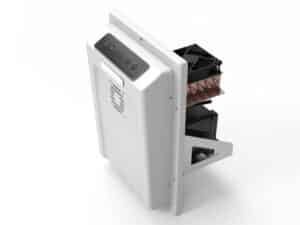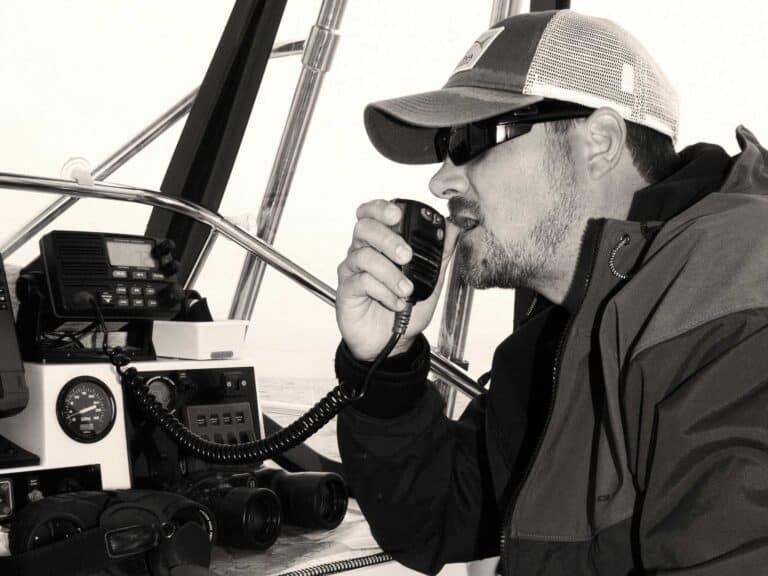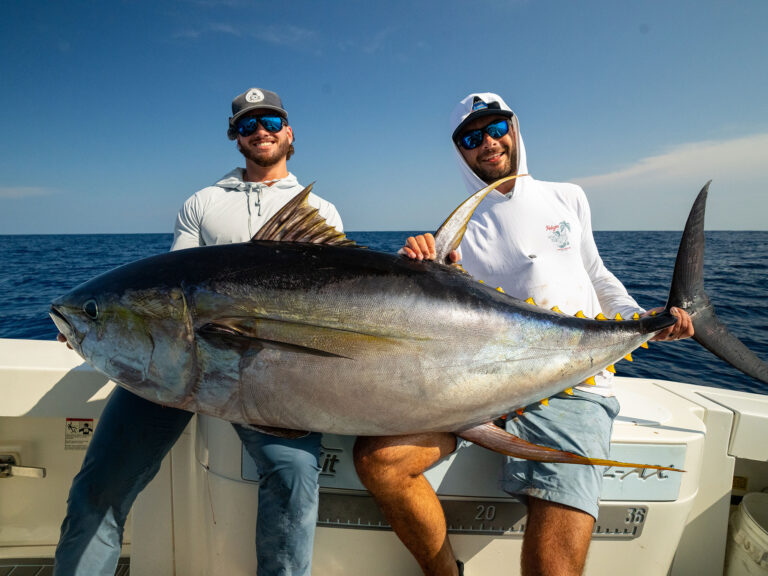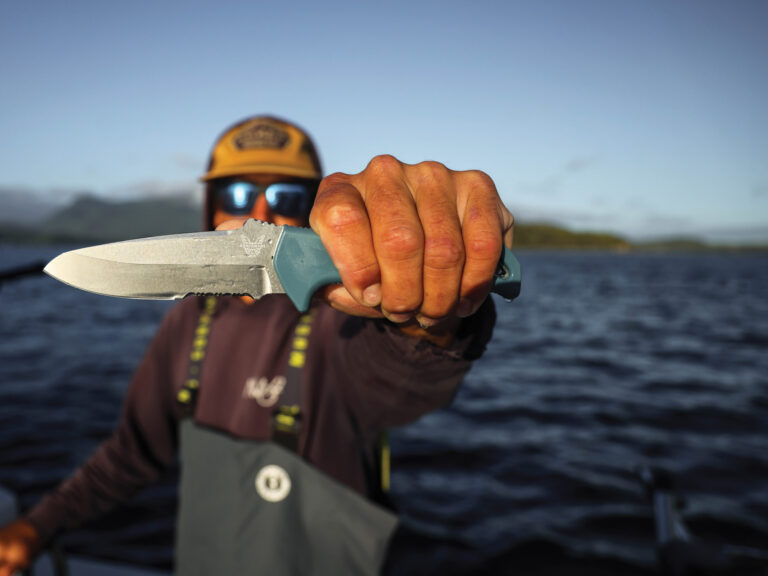
Capt. Richard Rutland pulled back the throttle on the powerful outboard, and his bay boat glided slowly toward the buoy marking the edge of the Mobile Bay ship channel. Conditions were ideal, with bright overhead sunshine, calm seas and clear, aqua-green water.
“There’s one, right on top. He circled behind the buoy. Get ready as he comes around,” he said as I grabbed the spinning rod for a cast. Against the emerald backdrop, the stout mocha-brown cobia stood out like a raisin in a bowl of oatmeal. I fired the Whip-It Eel to the 2 o’clock position and twitched the rod. That was all the encouragement the fish needed. It inhaled the rubber eel before zipping off after realizing it was tethered. Following a tussle, Rutland muscled the fish aboard.
“Nice job! That was a textbook sight-cast fish and the perfect way to wrap up the day,” Rutland said. “You’ve seen the best Alabama has to offer in terms of the fall cobia run. These brown bombers do a flyby every year and offer great sport.”
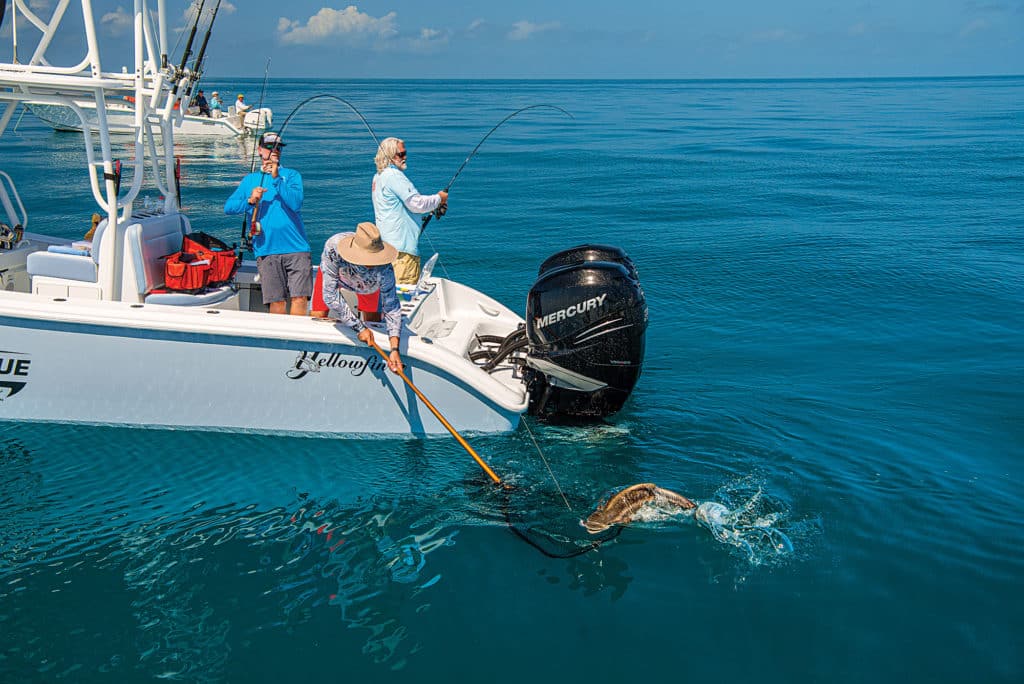
Fall Regulars
When I first met Rutland during an SWS seminar in nearby Fairhope, he told me about the predictable trek of ling (as cobia are called locally) every fall. The spring run along Florida and Alabama beaches is a rite of passage and draws large, fanatical crowds every year. The opposite season—which typically runs from mid-August until mid-October, depending on water temperatures—sees less fishing pressure, with mild weather and cooperative fish.
Rutland always starts the hunt by collecting frisky live pogies along the bay’s eastern shore.
“The ideal baits are 6 to 8 inches,” he told me while steering the trolling motor across the shallow flats. Flipping menhaden and diving pelicans surrounded us as Rutland readied his cast net. “I think all this bait near the mouth of the bay is why the cobia are here. I’ll bet if you have the right amount of structure, you could find ’em from Pensacola to Pascagoula to Texas during the fall.”
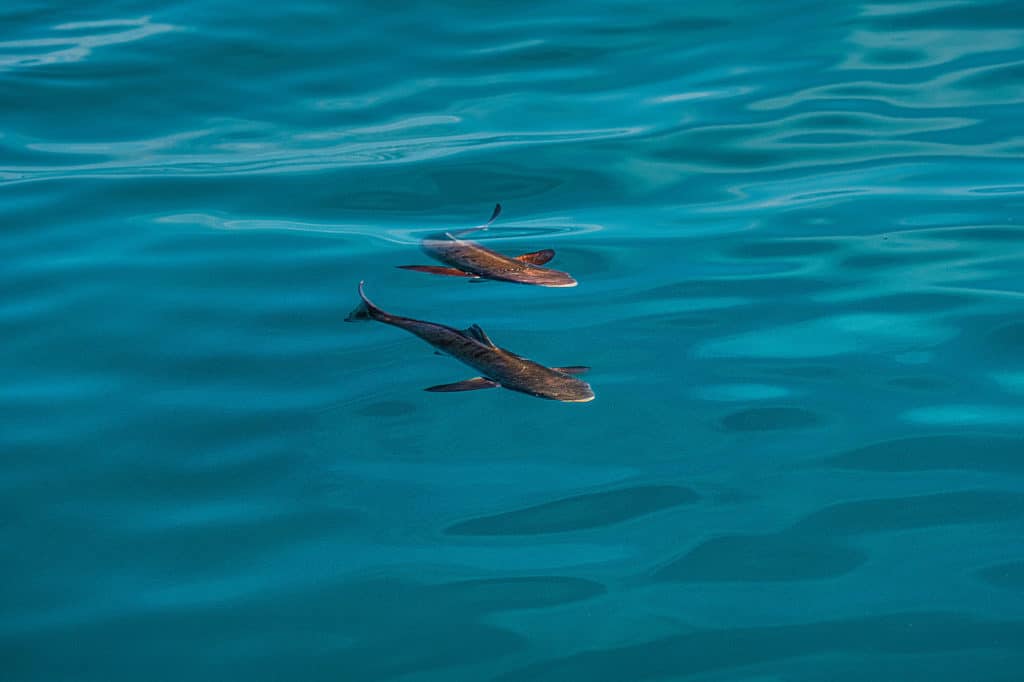
There is certainly no shortage of structure in Mobile Bay. A dozen or more commercial ships, waiting to enter the port, were anchored just beyond the channel entrance. Several miles of buoys and range markers provide more layover spots, and the numerous gas rigs in 30 feet of water or less add more feeding stations. Rutland focuses on the ships before moving inside to take advantage of the better visibility from the midday sun.
“The ships that are anchored for several days are always more productive than the new arrivals,” he explained. “The bait gathers and the cobia show up. I don’t usually find them along the hull sides, though. Most often they are in the shadows underneath the stern around the rudder or off the bow near the anchor chain. Empty ships are the best because they sit higher in the water with the running gear exposed. My electronics really help to pinpoint where the fish are holding.”
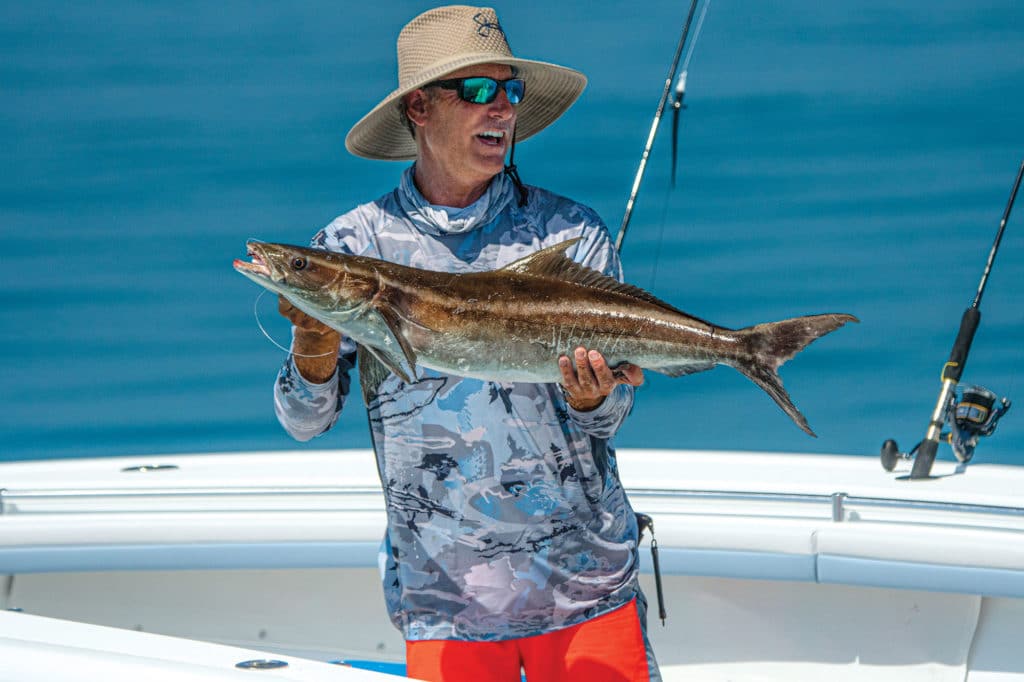
Down to It
When fishing around the commercial vessels, Rutland either free-lines baits or drops them to the bottom 60 feet below. Seven-foot medium-heavy jigging rods (30- to 60-pound class) with limber tips are matched with smaller conventional reels loaded with 65-pound braid and a 50-pound mono top shot connected with an improved Albright knot. Eight-ounce egg sinkers slide on the main line with a barrel-swivel stop. A short length of up to 60-pound fluorocarbon leader with a 4/0 to 5/0 circle hook completes the rig. Rutland uses palomar knots for his terminal tackle.
“You’ve got to be able to put serious pressure on these fish to get them away from the anchor chain, buoy chain or ship propeller,” he says.
Read Next: Best Cobia Baits
Rutland’s GPS-guided trolling motor is invaluable for this style of fishing. Using the remote-control fob, he guides the boat close to the ship and uses the anchor-lock function to soak the baits.
“I usually give it several casts or drops at each spot, but I don’t stay too long,” he says. “If they’re there, it usually happens pretty quick. Around the ships, the fish are usually near the surface. But you never know what they’ll do. They’re moody,” he adds.

Run the Circuit
Of the 14 fish we landed the first day, most were near the bottom. Multiple catches were cookie-cutter mates at 32 inches, and the biggest was 36 inches, about 20 pounds. A bigger one managed to wrestle free right next to the gunwale. Alabama law stipulates a 33-inch minimum fork length with a two-per-person daily bag limit.
“I’ve had days of 15 to 20 legal fish, and other days I’ve worked really hard for four or five. Most are 40 inches or shorter, but last week I boated a 67.5-pound fish off a midbay can buoy. I’ve caught them as far as 2 miles up into the bay. You just never know.” Rutland says the fall cobia stick around until the water temperatures drop to the upper 60s.
The next day, after loading up on more pogies and pulling a few fish off the ships, we ran to one of the shallow rigs that dot the bay. Rutland pulled his Chum Churn from a hatch and loaded it with dead pogy culls. Within minutes, shades of crimson began darting through the slick.
“Chumming draws in cobia, but it also brings out the endangered red snapper,” Rutland said with a grin. “They are thick on these rigs. I see a lot of tripletail when fall fishing for cobia too.”
Rutland arms his clients with spinning gear when sight-fishing the bay. Medium-heavy rods with 65-pound braid can launch live baits or lures long distances when the fish are on guard. Eel lures, large plastic swimbaits, and the traditional iridescent bucktail jigs up to 3 ounces top the fake smorgasbord. A run-and-gun approach to the dozens of navigation aids throughout the outer bay offers plenty of opportunities at the temporary residents.
“You can have the craziness of the spring migration,” Rutland says. “Autumn is my favorite time for cobia. We’re out here in short sleeves, the fish are plentiful, and you get to watch college football afterward. It doesn’t get any better.”
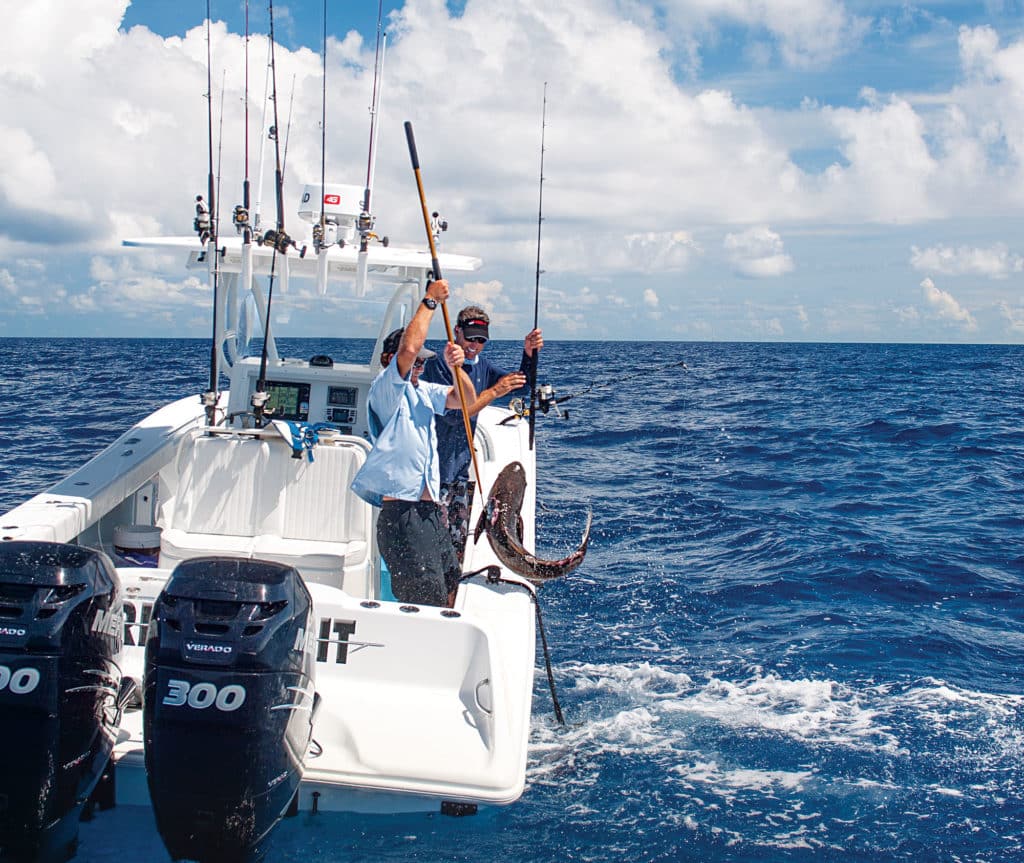
SWS Planner – Gulf of Mexico Cobia
What: Cobia
When: Mid-August through mid-October
Where: Anchored ships, buoy and channel markers, and gas rigs in Mobile Bay, Alabama, accessible from ramps on Dauphin Island or Fort Morgan
Who: Access to cobia is seldom limited by boat size. This is a perfect DIY fishery.
The following pros stand ready to help you dial in the particulars of strategy.
Capt. Richard Rutland
coldbloodedfishing.com
251-459-5077
Capt. Bobby Abruscato
ateamfishing.com
251-454-9867
Capt. Patric Garmason
uglyfishing.com
251-747-1554

SWS Tackle Box – Gulf of Mexico Cobia
Rods: 7-foot, medium-heavy jigging for conventional, or 7-foot, medium-heavy spinning
Reels: Penn Squalls or Fin-Nor Marquesa jigging reels, or equivalent; 5000-class spinners
Line: 65-pound braid with 50-pound monofilament top shot; 40- to 60-pound fluoro leaders
Bait: Live menhaden
Lures: 1- to 3-ounce eel lures, swimbaits, cobia bucktail jigs

